|
In September of 2025, my work is generating the most income it ever has in my career. Yet, I'm being forced to shut down my successul operation, against my will, due to one cause alone: 95% of that revenue is being stolen by piracy and copyright infringement. I've lost more than $1 million to copyright infringement in the last 15 years, and it's finally brought an end to my professional storm chasing operation. Do not be misled by the lies of infringers, anti-copyright activists and organized piracy cartels. This page is a detailed, evidenced account of my battle I had to undertake to just barely stay in business, and eventually could not overcome. It's a problem faced by all of my colleagues and most other creators in the field. |
VIDEO: 1,502 FPS high speed camera video
FAQ: All about Chicago skyscraper lightning strikes
Models had been agreeing on Chicago seeing an organized severe MCS (mesoscale convective system) on this night, so I decided it was worth making the trip. I wanted to shoot with my high speed camera's new fisheye lens from a closer vantage point than usual, so I left early in order to arrive well in advance of the storms to scout a couple of locations I'd discovered on Google Maps. I decided that one of them would work, and stopped there to await the storms' arrival. Before midnight, the expected line of storms was approaching the city with a very promising trailing stratiform region. There was some lightning activity in the leading anvil region of the storms, so I set up for stills as the storms approached. There were some intracloud flashes at this stage, but no upward flashes to the buildings.
I retreated inside of the car when the main core of the storms arrived around midnight. Normally the upward lightning activity begins some time after the cores pass, but this event produced five upward flashes to the buildings while the heavy rain cores were still over the city! As a result, I missed those first few. Finally, the heavy rain moved off to the east and it was time to set up.
There was a strong northwesterly rear inflow jet behind the cores, and wind-blown rain was a problem even though I was facing away from the wind (opposite-direction wind flow tends to curl back underneath any shelter you are under). As a result, I had trouble getting the cameras set up in a configuration that would keep them dry. I ended up having to use an umbrella to provide extra shielding from the rain, and had to redo the entire setup three times during the storms. All of this resulted in me missing several upward flashes to the buildings - but there ended up being so many that I still came away with a good amount of DSLR stills and high speed captures.
The highlight of the night was three events that produced strikes to four, five and seven of the buildings simultaneously. This included strikes to the John Hancock, Trump Tower, the Sears Tower, St. Regis Chicago, Aon Center and 1000M. The source of the 7th leader is unknown as the building it came from is obscured by taller structures from my vantage point. Maps indicate it could possibly be from Lake Point Tower, but I am still trying to track down its exact location.
This storm was so prolific that I lost count of the upward lightning flashes to the buildings. My attempt to derive a number results in at least 21 upward flash events. I captured 12 of the flashes on either my DSLR or my high speed camera. I missed at least 4 after I set up my cameras due to the wind and rain issues. There were 5 flashes that occurred before I set up due to still being in the heavy rain cores of the storms. The breakdown of the strikes to the individual buildings is as follows:
- Sears Tower: 15 strikes
- John Hancock: 7 strikes
- Trump Tower: 5 strikes
- 1000M: 3 strikes
- St. Regis Chicago: 2 strikes
- Aon Center: 1 strike
- Unknown location (possibly Lake Point Tower): 1 strike
DSLR Still Photos
This is a DLSR still of the quadruple flash (Sears, Hancock, Trump, 1000M):
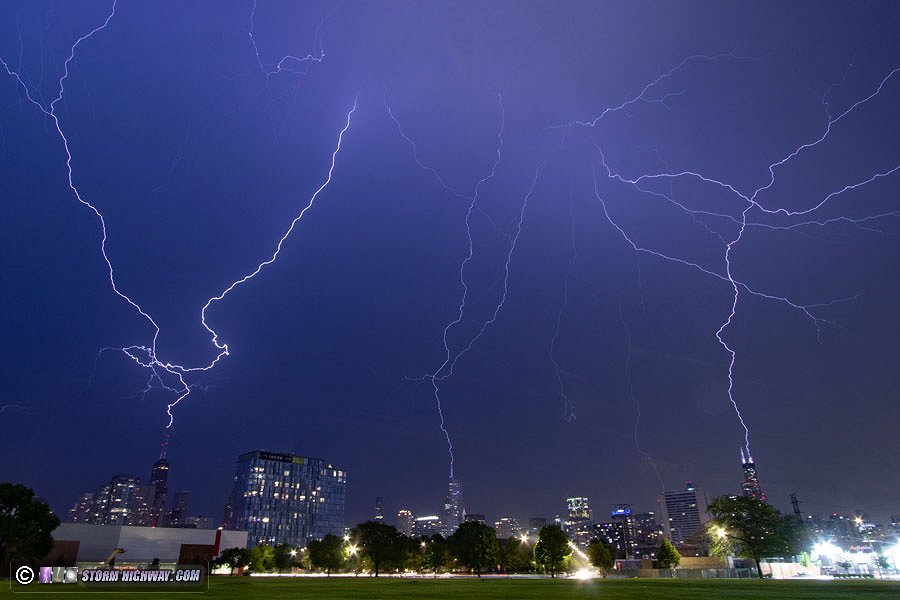
The quintuple strike (Sears, Hancock, Trump, St. Regis, 1000M):

The septuple strike (Sears, Hancock, Trump, St. Regis, Aon, 1000M, Lake Point Tower?):
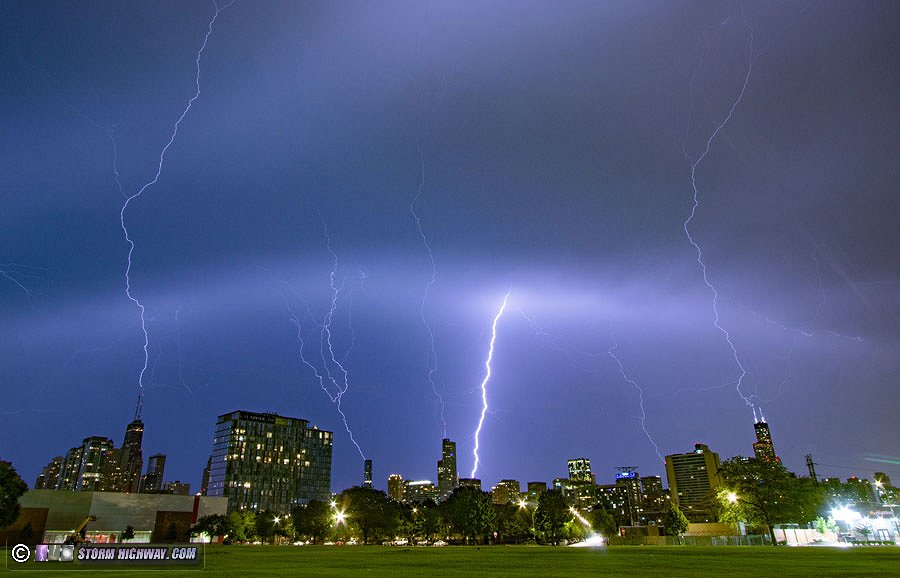
Click to view full screen version
More DSLR stills of building strikes:
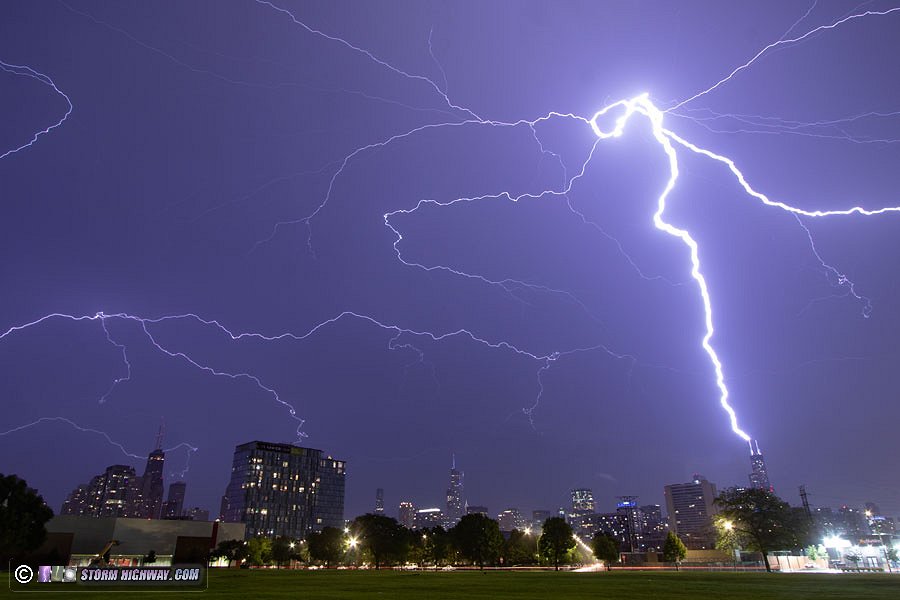
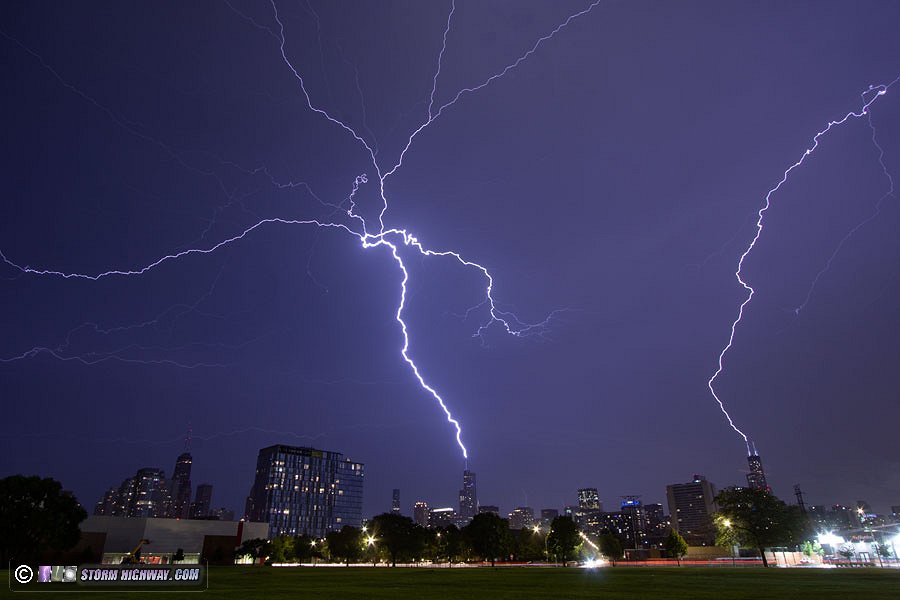
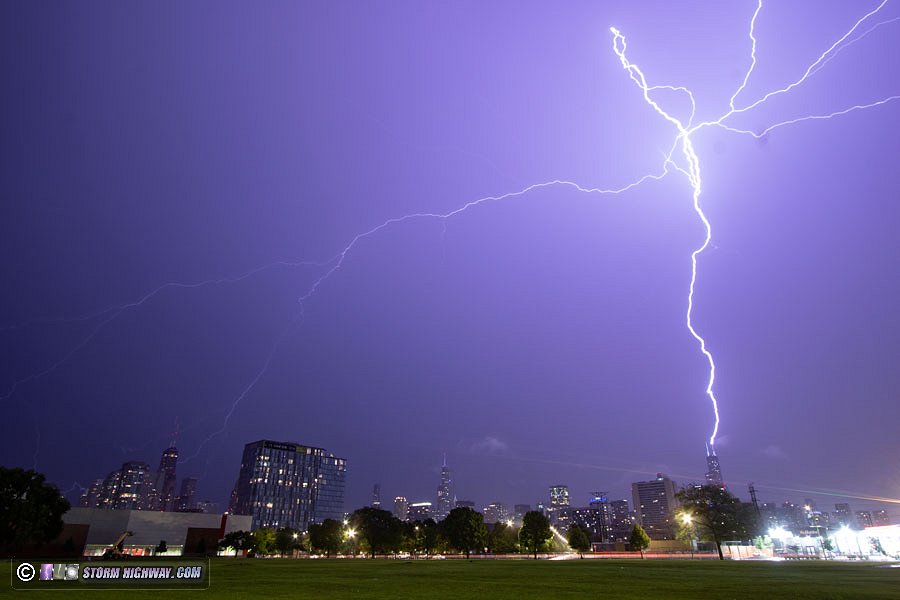
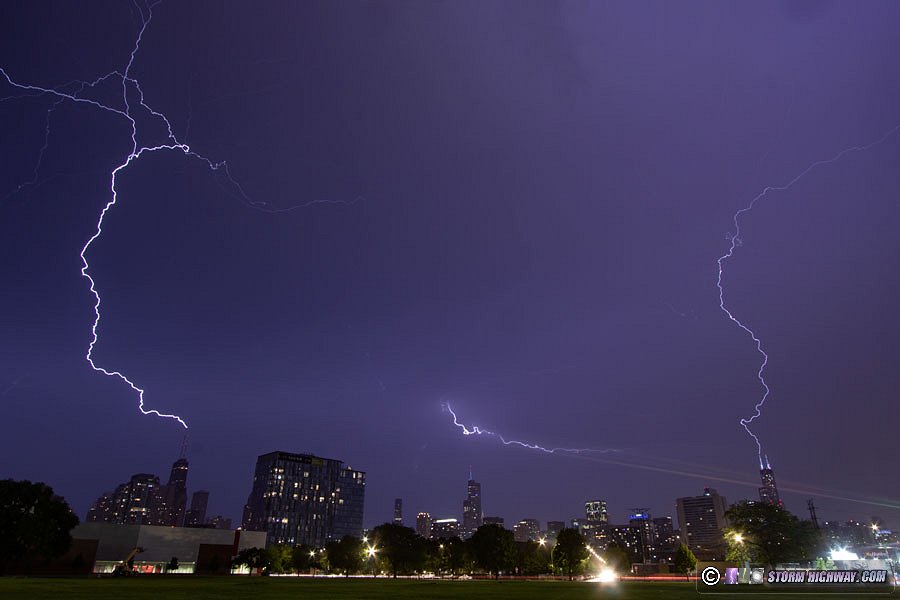
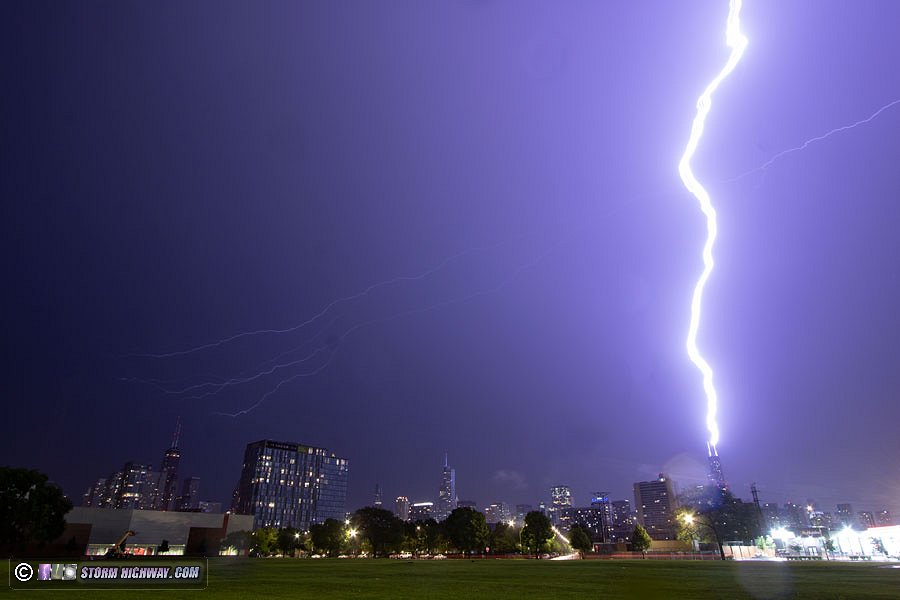
The Sears Tower was struck by the most upward lightning flashes of all of the buildings (an estimated 15 times).
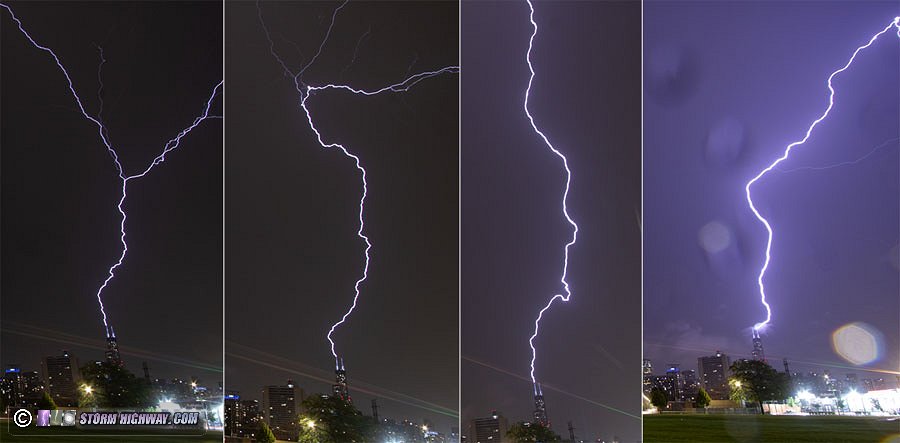
High Speed Video
This is the 1,502 FPS video from this event shot on the Chronos 1.4 high speed camera:
< Previous Chase: St. Louis metro lightning bust | All Storm Chase Logs | Next Chase: St. Louis upward lightning >
GO: Home | Storm Chase Logs | Photography | Extreme Weather Library | Stock Footage | Blog
Featured Weather Library Article:
|

